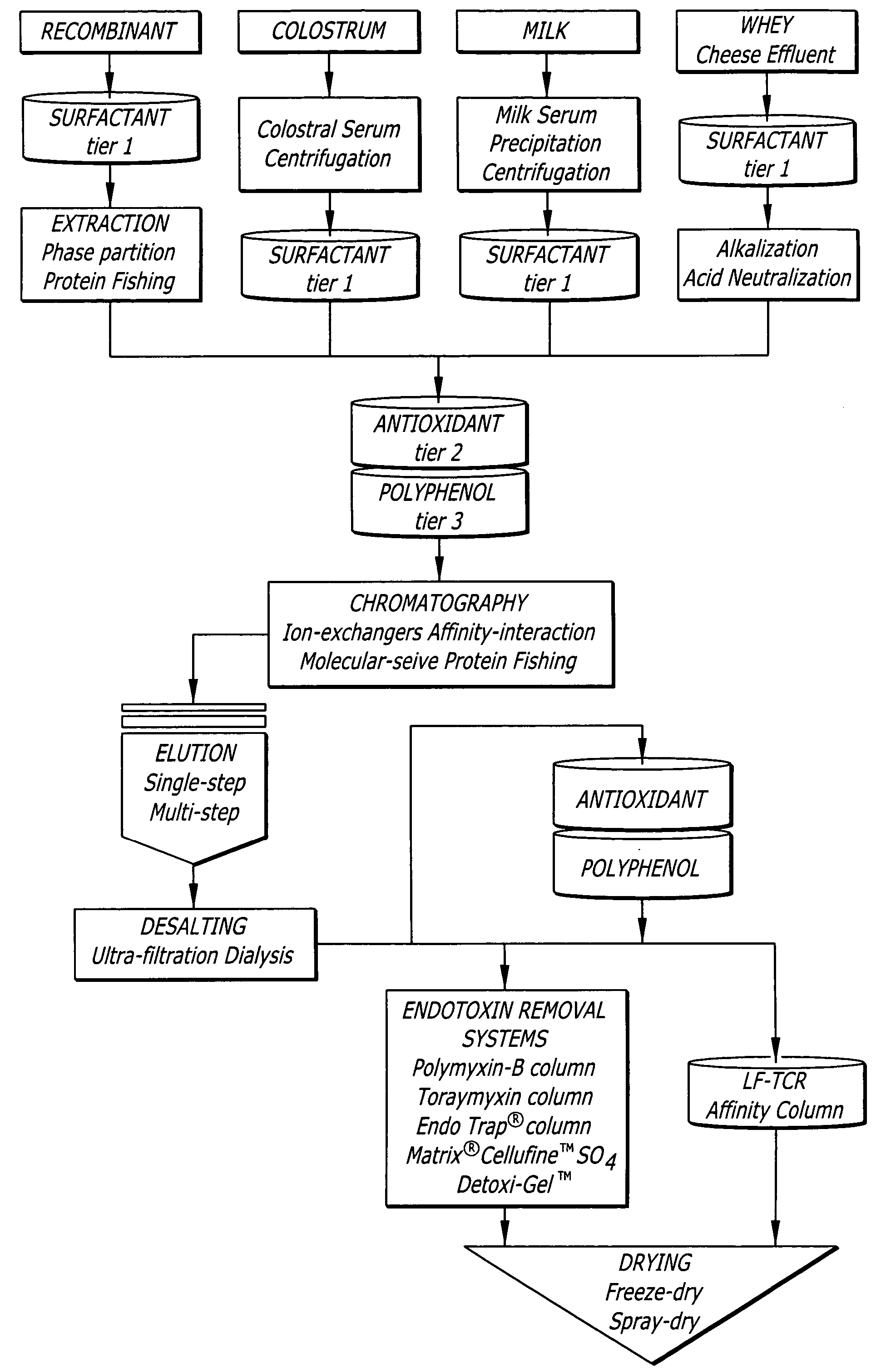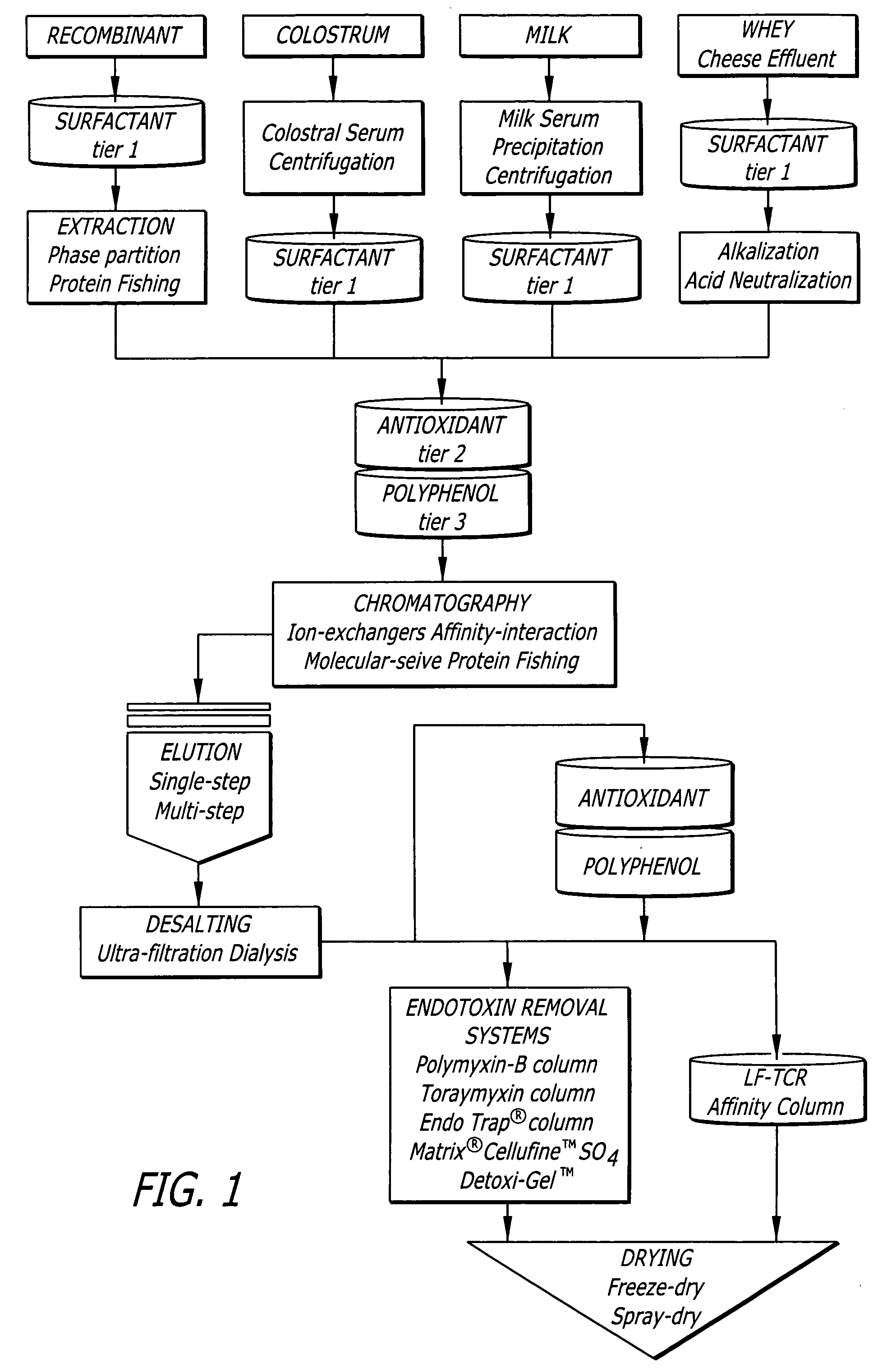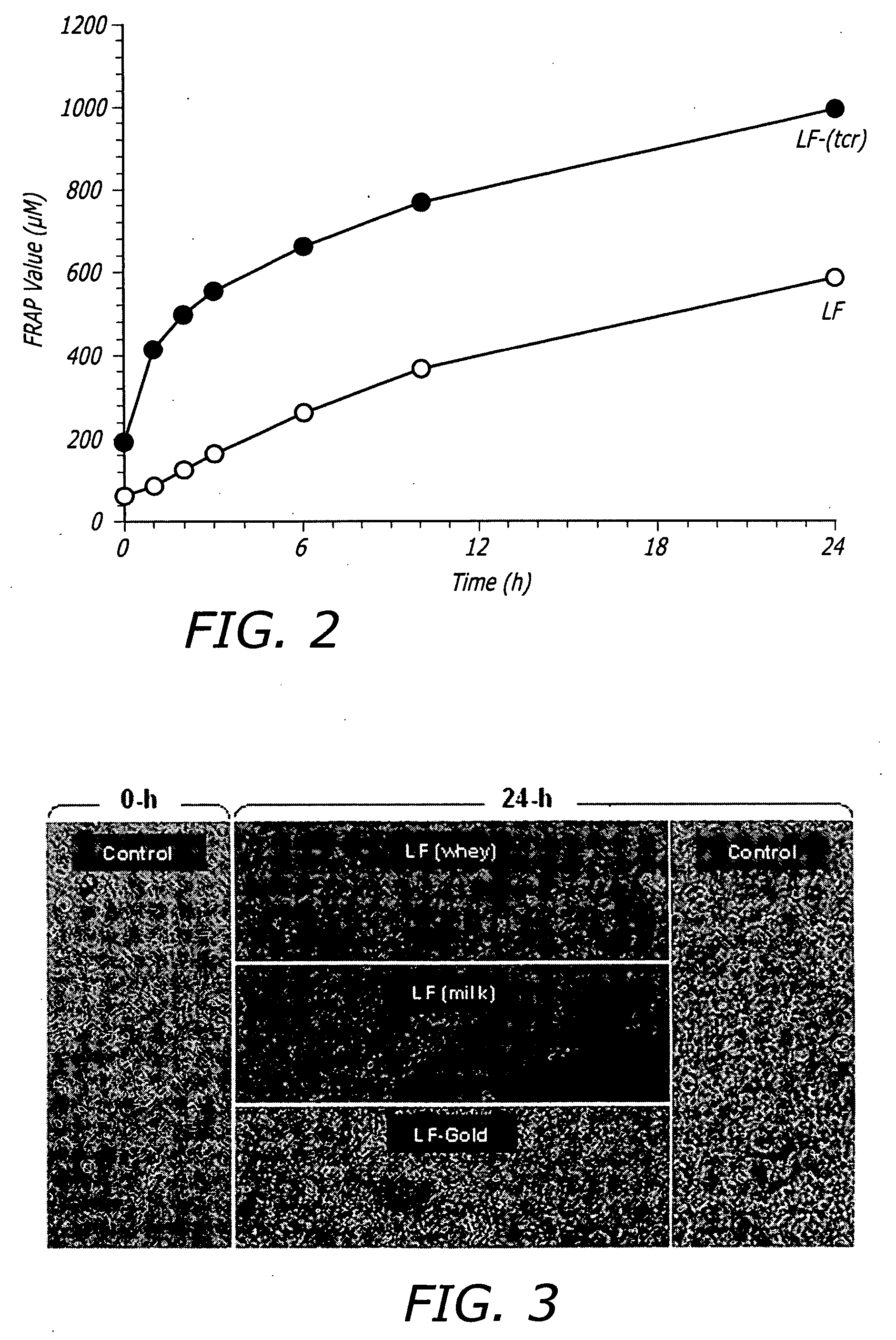Treatments for contaminant reduction in lactoferrin preparations and lactoferrin-containing compositions
a technology of lactoferrin and preparation, applied in the direction of transferrin, bacteria material medical ingredients, metabolic disorders, etc., can solve the problems of limiting the usefulness of lf protein, further compromising lf applications, adversely affecting lf bioactivity, etc., to achieve significant reduction and/or elimination of viable microbial load and endotoxin activity, and enhance health benefits
- Summary
- Abstract
- Description
- Claims
- Application Information
AI Technical Summary
Benefits of technology
Problems solved by technology
Method used
Image
Examples
example 1
TCR Process
[0140] A 1% (v / v) polysorbate-80 solution, a 0.5% solution of vitamin C (as calcium-L-ascorbate) with 10 mM sodium bicarbonate and 95% (w / v) turmeric root extract (0.1% curcumin) were used in the TCR process as surfactant, antioxidant and polyphenolic tiers, respectively.
[0141] Experiment 1: Ten grams of commercial whey-derived LF powder with a bioburden of 7200 CFU / g was dissolved in 100 mL of polysorbate-80 solution with gentle stirring at room temperature for 2 h. Quadruplicate samples of 10 mL each were aspirated from the homogenate and tested for bioburden according to the BAM protocol. The polysorbate-80 surfactant in the presence of LF caused about a 35% reduction in aerobic plate count (APC) and 40% reduction in yeast / mold counts. However, in this solution the coliform counts and the endotoxin activity in the LF remained unaffected.
[0142] Experiment 2: Ten minutes after adding 10 g LF to polysorbate-80 (100 mL) the solution was mixed with calcium-L-ascorbate (0...
example 2
Evaluation of TCR Process on Different Types of LF
[0145] The efficacy and possible broad-scale application of the TCR process to reduce the bioburden from different commercial types of LF (bovine LF derived from milk and whey; recombinant human LF expressed in a plant system) was evaluated. The TCR process consisted of the three tier system and the experiments were performed as described in Example 1. The TCR process results were expressed as cumulative endpoint data, consolidating the contaminant reductions in all three tiers.
[0146] In addition to treating the intrinsic contaminant loads, the efficacy of the TCR process was also tested against LF preparations challenged with specific pathogens. Accordingly, the milk- and whey-derived LF were challenged with an APC cocktail (˜5-log CFU / g) consisting of E. coli ATCC43895 (3-log CFU / g), Staph. aureus ATCC25923 (3.5-log CFU / g) and Listeria monocytogenes ATCC19115 (3.2-log CFU / g) and subjected to the TCR process.
[0147] Table 3 summar...
example 3
Functional Analysis for Prebiotic Activity of LF after TCR
[0150] The formulation composition is known to exert a significant effect on the structure-functional properties of LF. Therefore, the effects of the TCR process on the multifunctional activities of LF was evaluated. Accordingly, a functional analysis was performed with LF after TCR (LF-TCR) with respect to its prebiotic effects on lactic acid bacteria, antioxidant activity in combination with components of the TCR process and safety / toxicity by measuring cellular apoptosis upon exposure. The functional analysis data was compared with LF preparations prior to the TCR process, i.e. untreated controls.
[0151] The growth-multiplication of 18 different probiotic LAB (including three strains of Bifidobacterium spp., 13 strains of Lactobacillus spp., one strain each of Lactococcus spp., and Streptococcus spp.) was measured in the presence of LF-TCR and compared with untreated LF and controls (without any LF exposure). Two differen...
PUM
| Property | Measurement | Unit |
|---|---|---|
| concentrations | aaaaa | aaaaa |
| volume | aaaaa | aaaaa |
| volume | aaaaa | aaaaa |
Abstract
Description
Claims
Application Information
 Login to View More
Login to View More - R&D
- Intellectual Property
- Life Sciences
- Materials
- Tech Scout
- Unparalleled Data Quality
- Higher Quality Content
- 60% Fewer Hallucinations
Browse by: Latest US Patents, China's latest patents, Technical Efficacy Thesaurus, Application Domain, Technology Topic, Popular Technical Reports.
© 2025 PatSnap. All rights reserved.Legal|Privacy policy|Modern Slavery Act Transparency Statement|Sitemap|About US| Contact US: help@patsnap.com



